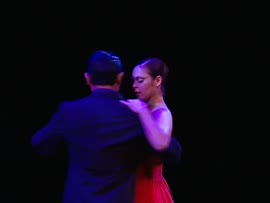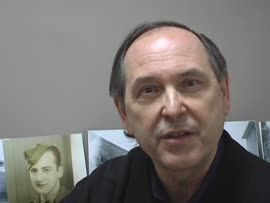This item is a recording of a meeting held of April 10, 1976, where the constitution of CEESSA was read and discussed.
This item is a recording of an annual general meeting in [1976]. Reports were given by the President, Secretary, Treasurer, Academic Research Committee, Publicity Committee, and Executive Director. A new board was elected.
This item contains recordings from the Second Banff Conference on Central and East European Studies.
Presentation by Mr. Petr Czarnowsky: Eastern Europeans, despite their proportion of the population, came to form a large number, often over 50% of ethnic associations in Alberta. This includes ethnic organizations, arts organizations, and linguistic schools. Policies of multiculturalism have helped to form these figures, but have had the unforeseen consequence of adding to confusion about Eastern European ethnic groups on the part of students and teachers alike.
Presentation by Mr. Joanna Mateko on the problems already being faced in the study of Poles. She came from Poland associated with the Polish Academy of Sciences in Warsaw for 15 years. She did work in the field of Polish history, having published numerous articles and co-author of bibliographies that were compiled by the Polish academy of sciences. She does her research on the Poles in Alberta. A problem that exists in the study of Poles is the inaccuracy of academic and official documents pertaining to Polish settlement in Canada, and the difficulty in unearthing accurate depictions and statistics of Polish settlers, and Slavic settlers more generally. This can be derived from a lack of knowledge from Canadian officials, and a lack of consciousness amongst many Slavic groups, particularly the Poles and Ukrainians.
Presentation by Mr. John Sokolowski, a graduate student in the department of Slavic Languages, his first graduate program was as a Classicist. He does work on the Russians and Belarussians. He started his work on the East Slavs, the Russians, Belarussians, and Ukrainians in Alberta. They no longer work on the Ukrainians as so much work has been published. They started their study with the Russians and Belarussians, they hope to determine an accurate number of people of Russian and Belarussian origin in Alberta. Contention on the accurate number of Russians and Belarussians in Canada, as the definition of Russian has changed over time, with many early documents associating many non-Russian ethnic groups as Russian. Dynamics have changed with census records over the years, which still continue to be unreliable. There is thought to be far more Belarussians in Canada than official census documents would suggest.
Presentation by Mrs. Dr. Yermilla Horna University of Calgary Department of Sociology. Dr. Horna was educated in Prague and Bratislava came to Canada in ’58, taking part in the project doing the history of the Czechs and the Slovaks. She got a grant for the study of patterns of adjustment of Czechoslovaks, the so called refugees of 1968-1969. The study focused on pre-1968 settlement of Czechoslovaks in Canada to figure out if incoming refugees had a previous basis to go off of, or had to ‘start from scratch’. Research found majority of Czechoslovaks came to Alberta as miners, farmers, or other labourers, mostly from Slovakia. Greatest wave of Czechoslovak migration prior to 1968 came in 1885.
Presentation by Mr. Kostash: Talks about the function of universities. Talks about how East European and Soviet Studies at the university follows the same functions. Mentions that one who takes particular focus on the East European courses offered by the University can find themselves being skilled and knowledgeable scholars. Initiatives by professors at the university to make sure students in the field go out to the ethnic communities to get a feel for how they are. Talks about the importance of community approval and funding for new programs. Stresses transparency of activities in programs as it relates to the community.
Presentation by Mr. Duruviches, a member of the Lithuanian community, and President of the Baltic Society: Discusses the contention with the label ‘Soviet’, coming from Lithuania, and the history Lithuania has with the Soviet Union. The importance of having a place such as a University to study one’s heritage. Expects from the University that it is kept in mind that although their issues are similar at the moment, that Baltic peoples are not Slavic peoples.
Presentation by Dr. Bergin from the Faculty of Education: has a strong interest in Mennonite culture. Difficulties because of mixed loyalties on representing different groups; particularly the Mennonites, who aren’t easily identified by typical visages.
Presentation by Dr. Sukoversky: the definition of a collection, and that professors start collections. Students can start collections too. Ethnic groups can start collections.
Presentation by the Chairman of Edmonton Historical Board
Presentation by Mr. Kistner: Wasn’t prepared to present but is talking from the perspective of a foot soldier. He is Baltic German born in Tallinn Estonia. Talks about how maps often forget about the islands of Estonia. Baltic Germans is a very small group. It’s worthwhile for even very small groups to write their history and preserve their heritage. In doing work there’s lots of assistance needed, time, and footwork. Being a small group has its advantages, no need for sampling.
This item is a recording of a conference presentation. Shevchenko as a national poet of Ukraine. Major developments that might take place in the next few decades: long term climatic conditions, changes in climate are less predictable; the capacity for food production will be not as good but the population will be expending sharply – tremendous pressure for food, massive famines. Restructuring of political power is coming. Atomic weaponry is a threat. Expansion of education will result in diffusion of power of political decision making. Physical limits of human activity. Redistribution and optimization of natural resources. Economic shocks for the US: Japan’s economic growth, Vietnam war, Chinese experience. Product life cycle. The USA will not be able to impose their will on other nations. In Europe, new political construction will take place. There will be a power bigger than a nation-state. European countries have similar stages of development and are ready for globalization. Every nation will retain its national heritage but they will unite on a global political level. China’s influence will grow in the decades to come. It will be less dependent on other countries. Unlike the Soviet Union, China retained more equality. American model is not appropriate to countries that have no natural wealth. Japanese had high motivation and an obsession for learning technology while preserving own traditions. They have capacity for national cooperation in the face of a threat. Japanese will be performing another miracle – just watch them. They will be a model for European countries. Soviet Union has tremendous range of natural resources. Its potential productivity is very high. Marks’ proposition was true for limited resources. Communist society is supposed to be highly cooperative in the absence of material scarcity. But USSR is the last empire and it is disintegrating quite quickly. What is awaiting for the USSR? It can become a supplier for more developed countries. Atomic war is also a probability but it could happen only accidentally; possibly a conventional war with China. It does not pay to keep an empire. Now much energy is being wasted on keeping that empire alive instead of developing. Ukraine in this context is a modern nation; it has generous natural resources. It has a necessary infrastructure for an efficient country.
This item is a recording about artist William Kurelek and author Myrna Kostash
This item is an interview with Fred Prybysh conducted in Ukrainian on February 19, 1976. In the interview Mr. Prybysh discusses immigration to Canada and the Russian Orthodox Church in Edmonton.
Sans titreThis item is a recording of an interview conducted with Lorna Wiklun on June 28, 1982. Her grandparent left Russia sometime after 1903, they were Mennonites. She discusses her family's immigration to Canada through Mexico to Manitoba and Saskatchewan.
Sans titreVideo performance excerpts from a 2008 live performance of Girl in the Red Dress TANGO. Created for the Ukrainian Shumka Dancers of Canada to an original music score by Andriy Shoost, Kyiv, Ukraine. Girl in the Red Dress TANGO features dancers Jayleen Gordey and Leo Sato with dancers from the Ukrainian Shumka Dancers of Canada.
Video performance excerpts for a contemporary original dance theatre work titled Shumka Remembers, conceived and directed by Gordon Gordey. Video excerpt contains commentary from Gordon Gordey at the Ukrainian Cultural Heritage Village, Alberta, Canada. This dancework was created for The Ukrainian Shumka Dancers of Canada. Shumka Remembers is a contemporary Ukrainian Canadian narrative folk dance theatre work with video exploring the unjust internment of Ukrainian Canadians as “enemy aliens” in Canada during WWI. These “enemy aliens” were subjected to having to carry registration identity papers, often pay monthly registration fees, and were under constant surveillance. Of the 80,000 who were registered under the authority of the Act, 8,579 were deemed: “enemy aliens”. The majority of “enemy aliens” were Ukrainians and were arrested and interned in 26 makeshift encampments located mostly in Canada’s frontier hinterlands. They were forced into hard labour clearing land for roads, building bridges, and building the railway.
Director's comment on the Sumka Remembers Dance - Ukrainian Canadian internment
Anna-Marie discusses Vinkopletennia (wreath weaving ritual) songs collected around Saskatoon in this project.


